Installing double bubble insulation in a metal building may help reduce thermal-related issues. But how can you complete this task? We got curious, too! So we researched for you, and here’s what we found.
First, prepare for the task by understanding its different details, such as the appropriate seasons to install the insulation material. Next, gather all the essential equipment and materials. After finishing the preparations, proceed with installing the double bubble insulation in a metal building by following these steps:
- Prepare the wooden furring strips.
- Place the furring strips.
- Install the double bubble insulation to the walls.
- Install the double bubble insulation to the ceiling.
If installed correctly, the double bubble insulation should help spread excess heat around the metal building's environment. So keep reading as we talk about the details of this operation. Make sure to read this entire post so it can assist you in minimizing the risks of costly mistakes.
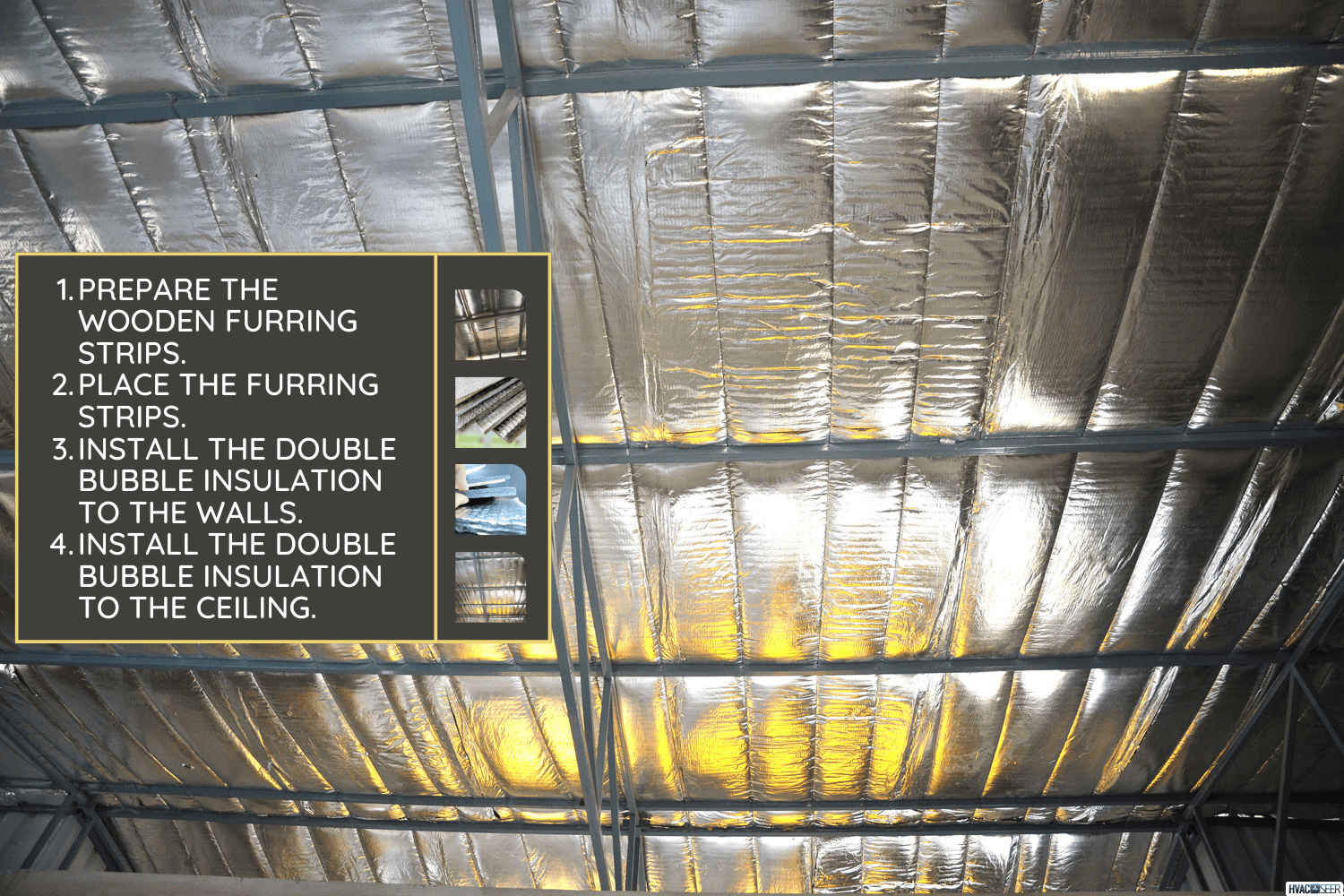
Things To Keep In Mind When Installing Bubble Insulation
Before installing double bubble insulation in a metal building, you should take note of certain particulars. Understanding the following details helps ensure that the installation operation goes well:
Ideal For Hot Or Mixed Climates
Bubble wrap insulation has properties that spread heat instead of blocking it. Those traits allow the material to be optimal for use in properties in locations with hot or mixed climates.
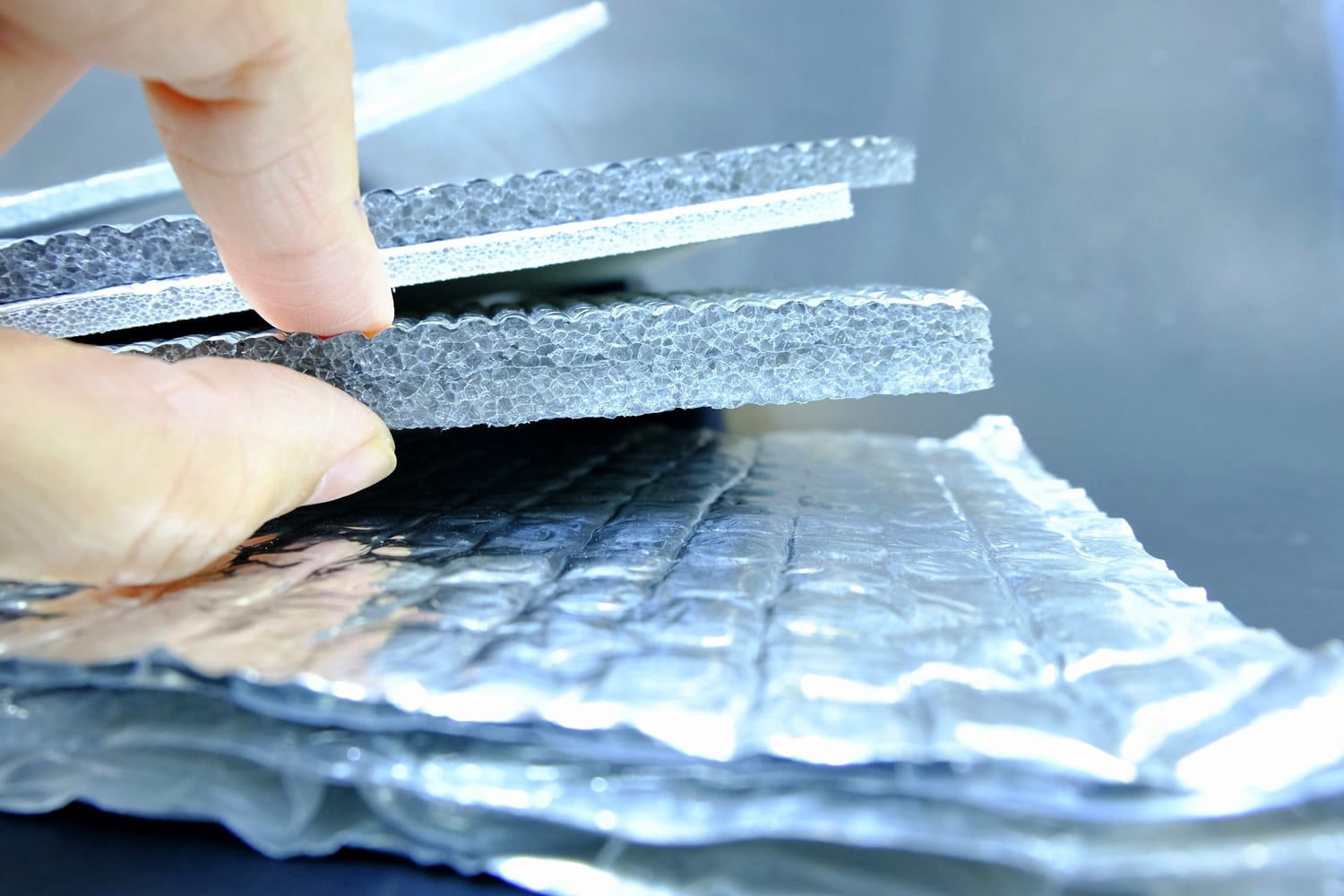
Residences and other establishments in states like Alabama, Georgia, and Florida may make the most out of this insulation material than other regions.
Appropriate Installation Period
Select a season other than summer to install double bubble insulation in a metal building. That way, the risks of getting burned or scalded from the heat-conducting materials should be quite low.
Secure Your Equipment
Prepare all the equipment and materials needed before starting the installation job. Doing so should help minimize travel costs, which may skyrocket if you return to local stores frequently to get additional items.
Prioritize Safety
Always ensure your safety and the well-being of nearby individuals during the installation operation. Some of the preventive measures you should follow are:
- Wear loose-fitting yet long-sleeved clothing to prevent direct contact and irritation from harmful materials and surfaces.
- Protect your head by wearing a reasonably sturdy cover or helmet.
- Avoid potential eye, nose, and throat problems by wearing safety glasses and a respirator.
- Aim to minimize the dust in your work area as much as possible.
- Ensure that the job site has adequate ventilation to reduce dust buildup.
Apply Proper Sealing
Take note that bubble insulation doesn’t usually seal well, especially around holes. You can seal those gaps before installing this type of insulation. Otherwise, you may use other kinds of insulation to aid in sealing the assembly.
Understand The R-Value
R-value is the coefficient used to measure thermal resistance. Often used in measuring insulation, you can gauge the efficacy of your double bubble insulating material by identifying its R-value.
Take note that double bubble insulation generally has an R-value of 3 to 7. So you may need to apply extra insulating layers for you to take advantage of your desired effect.
The Things You’ll Need
- Hand or circular saw
- Wooden furring strips
- Double-sided tape
- Utility knife
- Construction adhesive
- Caulk gun
- Double bubble insulation
DIY Instructions To Install Double Bubble Insulation In An Existing Metal Building
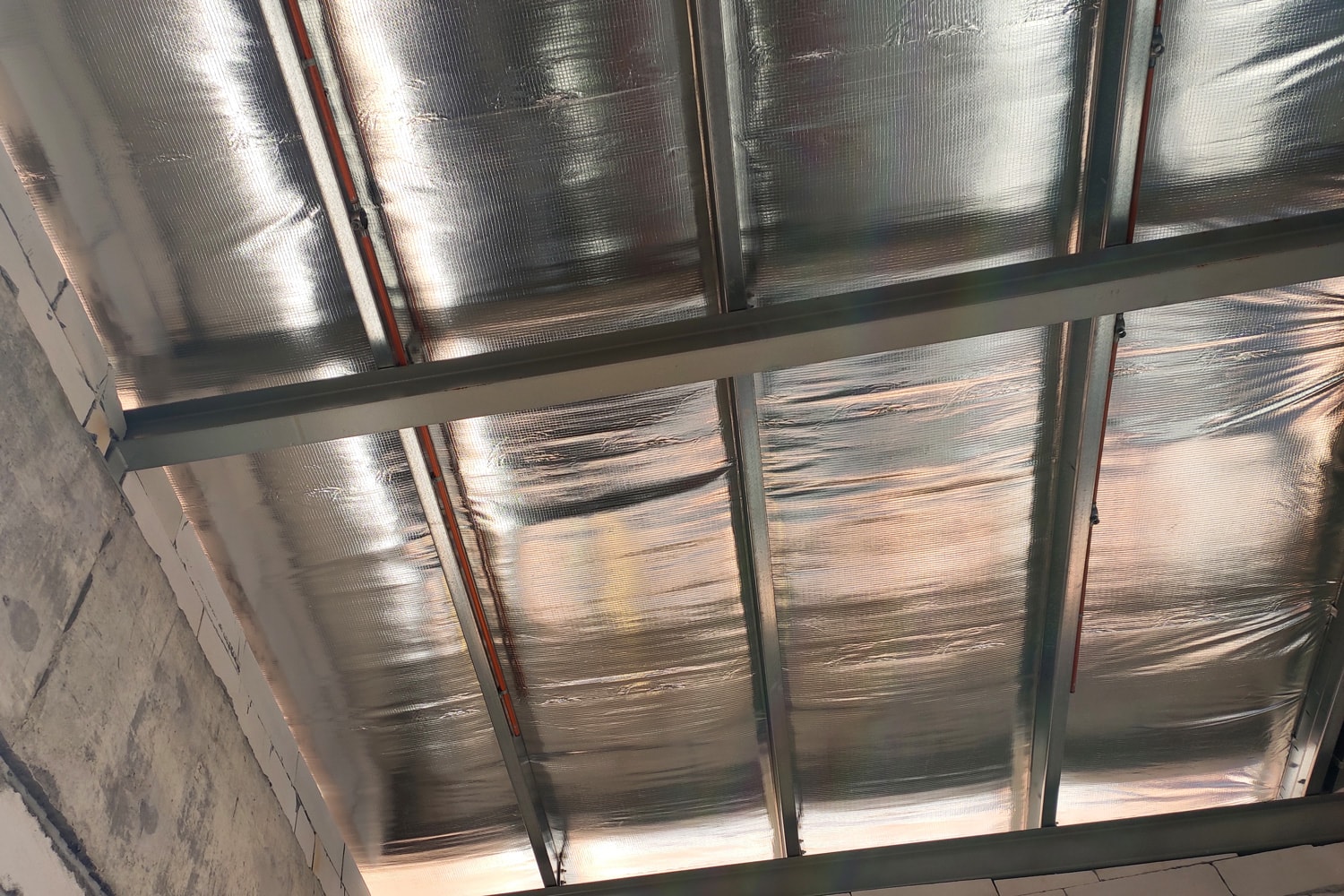
Step #1: Prepare The Wooden Furring Strips
Cut the furring strips to size based on your desired measurements. Then, apply construction adhesive to one side of the strips. Use a caulk gun for the construction adhesive to apply it easily.
Step #2: Place The Furring Strips
Attach the furring strips next to the building’s vertical metal beams. Next, clamp the strips in place to ensure they have a proper bond with the metal wall. Allow the adhesive to set and cure for about 24 hours before proceeding to the next step.
Step #3: Install The Double Bubble Insulation To The Walls
With the adhesive cured, apply double-sided tape to the sides of the vertical metal beams. Attach the double bubble insulation to the double-sided tape afterward.
Note: You may need to use a stepladder for this step. If so, ask another person to help hold the ladder while you're climbing it for additional security.
Tip: A safer option to use a stepladder would be to use scaffolding. This alternate choice can be ideal if you can’t find extra assistance from another person.
Step #4: Install The Double Bubble Insulation To The Ceiling
Bear in mind that you may not need furring strips for the installation on the ceiling. Instead, you might only need to place the double-sided tape onto the ceiling’s cross beams.
Then, carefully climb your stepladder or scaffolding as you carry the double bubble insulation layers to the installation location. Attach each insulation material to the double-sided strips afterward.
Repeat steps 3 and 4 until you cover the interior ceiling and walls of the metal building with the insulation materials.
Tip: Cut the excess double bubble insulation you installed on the ceiling with a utility knife. Then, tuck the extra pieces into the gaps to improve the seal.
Check out this double bubble insulation on Amazon.
You can also check out the following video if you need a visual guide for this procedure. The person in this clip also provides a brief explanation of how to install double bubble insulation in an unfinished metal building:
Is Double Bubble Insulation Worth It?
Installing double bubble insulation can provide different advantages, particularly for metal buildings. Some of these possible benefits are:
Prevents Hot Spots
Double bubble foil insulation's ability to disperse excess heat can help prevent an unwanted concentration of heat in a particular area in the building. Without this insulation material, a hot spot may occur, which might also become the precursor to a fire.
Regulates Indoor Temperature
Like other insulation materials, double bubble insulation can help keep the building colder in the summer and warmer in the winter. However, bubble foil insulation differs from the other variants in its ability to disperse heat instead of absorbing or blocking it.
In comparison, other insulation materials, such as fiberglass, may not prevent radiant heat transfer. If placed in properties experiencing hot weather, these insulation options may still create indoor hot spots.
Reduced Installation Risks
Certain insulation materials, such as fiberglass, may put the installer at risk of acquiring injuries and wounds. Fiberglass shards can be sharp, which may become airborne and cut exposed skin.
On the other hand, double bubble foil insulation doesn’t often promote those dangers. The installation process for this type of insulation may only require you to stick it onto applicable surfaces. Plus, this task typically doesn’t include the added worry of dealing with airborne particles.
Where To Use Double Bubble Foil Insulation?
Aside from metal buildings, double bubble insulation may also provide optimal benefits to structures like:
- Storage units
- Workshops
- Barns
- Crawl spaces
What Is The Difference Between Single And Double Bubble Insulation?
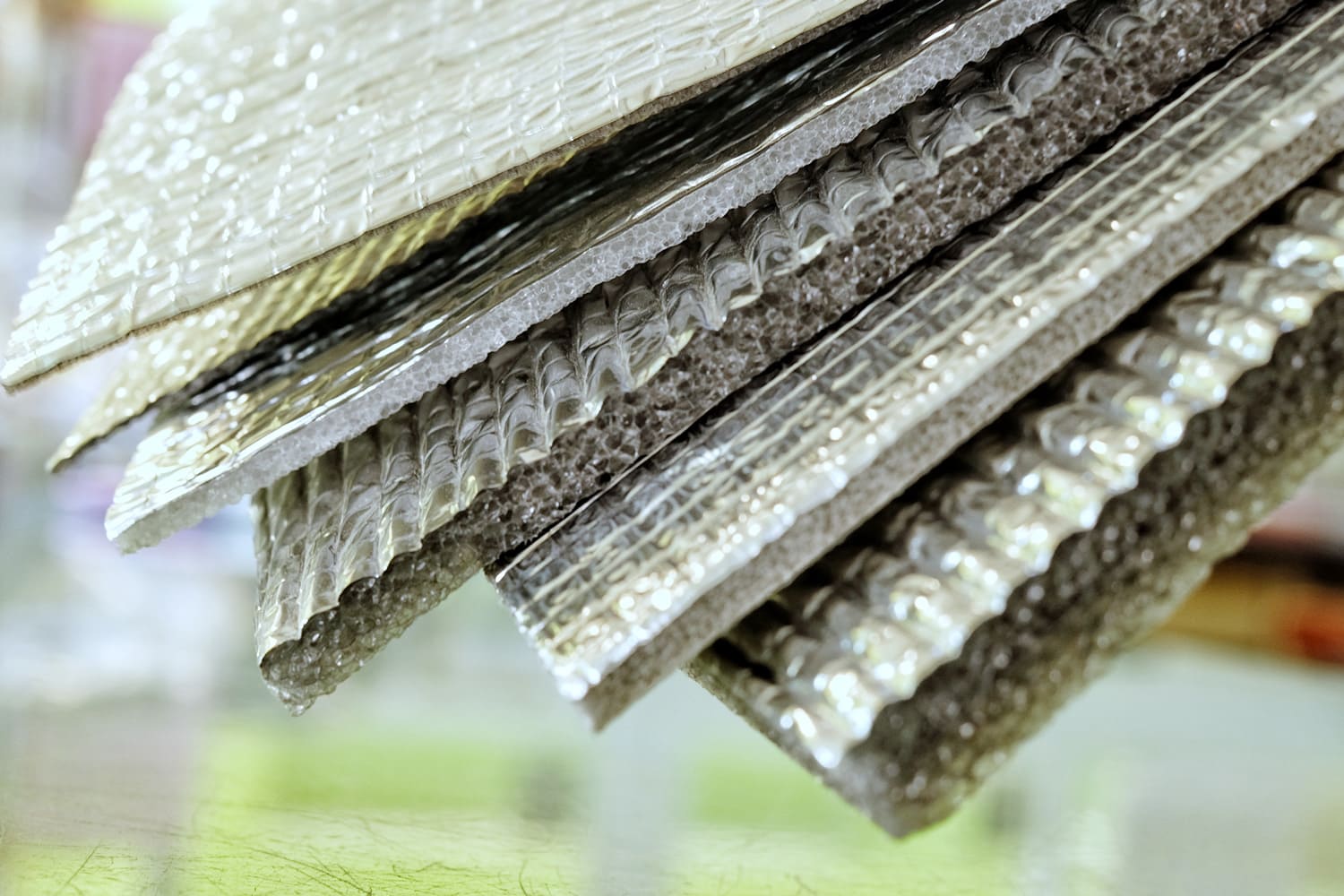
Double bubble insulation is generally more effective in preventing excess heat transfer than its single counterpart. It does this job by having a larger gap between the two foil sheets as compared to the single bubble insulation.
Watch this short clip to gain additional insight into the similarities and differences between these two types of foil insulation:
Is Bubble Wrap Insulation Flammable?
Bubble wrap insulation may not be flammable, especially if the material has a construction taking advantage of non-flammable components. Some examples include models made out of aluminum or a non-flammable plastic composite.
What Is The Best Insulation For Metal Buildings?
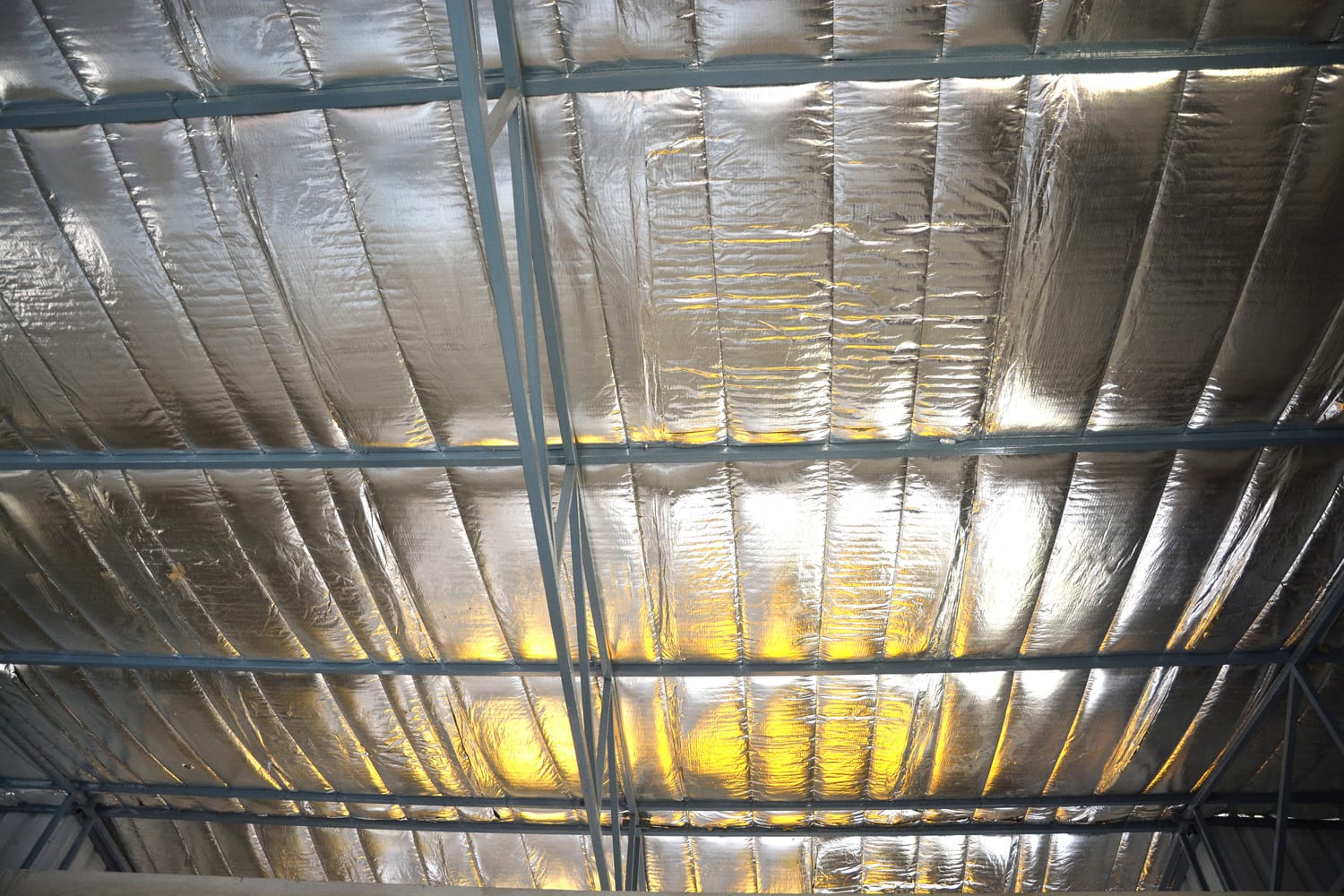
At this point, you might also be looking into other options to insulate your metal building other than double bubble insulation. If so, other excellent choices are:
- Fiberglass: Although this material comes with certain risks, it’s reasonably easy to install and shouldn’t pose a significant environmental threat.
- Fabric liner: An unfaced insulation that typically follows most energy codes.
- Rigid board: A uniform insulation material ideal for reducing thermal bridging.
- Spray foam: Might be more challenging to install than other options, but may provide an excellent seal if installed correctly.
Final Thoughts
Although the installation job may look relatively simple, setting up double bubble insulation in a metal building still requires you to learn about various details. That way, you won’t put the setup at risk of failing. Plus, you can gain peace of mind, knowing that the installation procedure went well.
Also, check out these other great posts if you want to gain additional knowledge about insulation:
What Is The R Value Of Bubble Wrap? [Is It A Good Insulator?]

